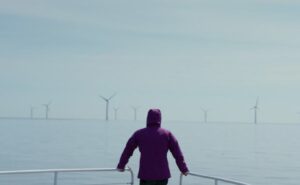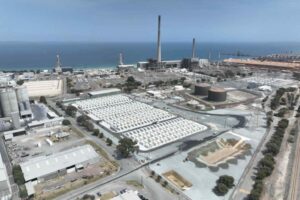The conservative West Australian state government has taken the lead over the rest of the country and instructed its state-owned utility to shut down 380MW of fossil fuel capacity in the next two years. It seems certain that much of this will be ageing coal-fired generation.
The decision was announced by WA energy minister and treasurer Mike Nahan as he deals with the extraordinary excesses and perverse market incentives that have created a budgetary nightmare for the state – with the annual cost of electricity delivery more than $500 million more than the state-owned utilities can recoup from users.
Nahan, a former head of the arch-conservative Institute of Public Affairs, praised the role of rooftop solar and the likely benefits of battery storage in helping deliver the reforms announced on Thursday, following a two-year review of the state’s energy markets.
Nahan made three big decisions in seeking to address the huge over-capacity of more than 1,000MW in generation assets, and the massive payments to fossil fuel peaking generators that are rarely if ever used, and equally generous payments to large consumers who rarely if ever had to turn down their demand.
The first decision will be to require Synergy, the state-owned generator and retailer, to shut 380MW of excess capacity. Analysts expect this to include the 240MW Muja A and B unit at Collie, which underwent a costly and controversial upgrade just a few years ago.
The second decision is to slash the return on so-called demand-side management. DSM, as it is known, offers returns to users who agree to turn down demand when supply is short.
It is mostly considered a good thing, but the way it was structured in WA meant that $430 million had been handed out to providers, even though their services has been used for a total of just 106 hours on eight occasions – including testing – in the past decade.
The third decision is to gradually ramp down the scale of “capacity payments”, which saw a fleet of gas-fired or diesel-fired peaking power plants built, but rarely if ever used. Instead they received payments merely for being on standby, and in WA those payments were around $120,000 for each MW of capacity per year.
That meant that a 100MW diesel plant – such as the one built near Merredin and highlighted in our story “Dumb and dumber energy choices in WA” – would receive $12 million a year just to be on standby. Some of these plants will likely be shut as the capacity payments are wound back and then replaced with an “auction” system.
Generators in the eastern states, such as AGL Energy, are pushing for capacity payments in the main National Electricity Market, although capacity mechanisms have been dismissed by many as just another subsidy for fossil fuel plant.
Nahan said that his measures and the removal of excess capacity would save around $130 million a year over the next seven years.
Those savings, however, are unlikely to be passed on to consumers, but will be used to reduce the massive government subsidy that supports Synergy each year, and which the WA government can no longer afford due to its declining mineral wealth.
Nahan’s moves are in contrast to the stalemate in the NEM, where there is more than 7,000MW of excess base load capacity, but coal-fired plants are refusing to close because of the advantage it might give to rivals, and because of the costs of remediation. Instead, they are calling for handouts to assist with the closure.
There will be no handouts to Synergy, although that utility might reflect on the money spent on refurbishing the aged Muja A&B units at Collie, which seem most likely to be closed. Some ageing and costly gas generators may also be closed.
Nahan, who in his time at the IPA was an avowed skeptic of climate science and renewable energy, was full of praise for the role that solar has taken in “completely revolutionising” the WA energy industry.
On this remarkable web page, “More power to you”, Nahan tells the story of how WA’s energy woes began with uncontrolled blackouts in WA (the fault of a dodgy grid and unreliable gas), and how market “reforms” led to an unsustainable energy market.
Nahan says solar has given the government the tools to repair it. He noted that despite a record heat wave and four days of 40°C plus temperatures in February, and record demand of 4,047 MW, demand-side management was not needed.
When the WA grid hit that level around 5pm local time on Feb 9, solar was providing more than 200MW, after contributing more than 300MW for much of the day.
“Solar makes perfect sense, given that Perth is Australia’s sunniest major city with around 300 days of sunshine a year,” Nahan said. He also hailed the arrival of battery storage, which will bring the next phase of energy technology.
The West Australian quoted Nahan as admitting it was unlikely a WA government would ever build another coal-fired power station, amid growing gas supplies, demand for solar and changing technology including household batteries and large-scale renewables.
“We are not going to be replacing coal generating capacity,” he said.
Nahan’s moves were welcomed by most, although not by DSM providers. While the removal of excess fossil fuel capacity is likely to smooth the way for more large-scale renewable energy projects, there is still concern over the dominance in the market of the state-owned Synergy.
Synergy CEO Jason Waters would not be drawn on which capacity would be withdrawn.
“The retirement of excess capacity is aligned to the business’s long term corporate strategy. Synergy is in the process of reviewing the cost efficiency of each of its generation assets to determine the best commercial outcomes for the business and the state and will announce plant retirement plans in due course.”









